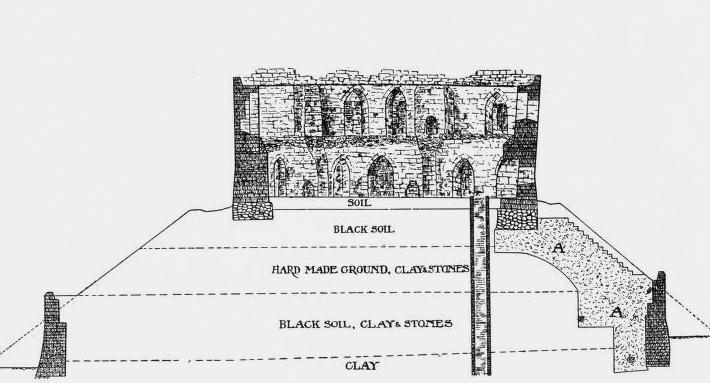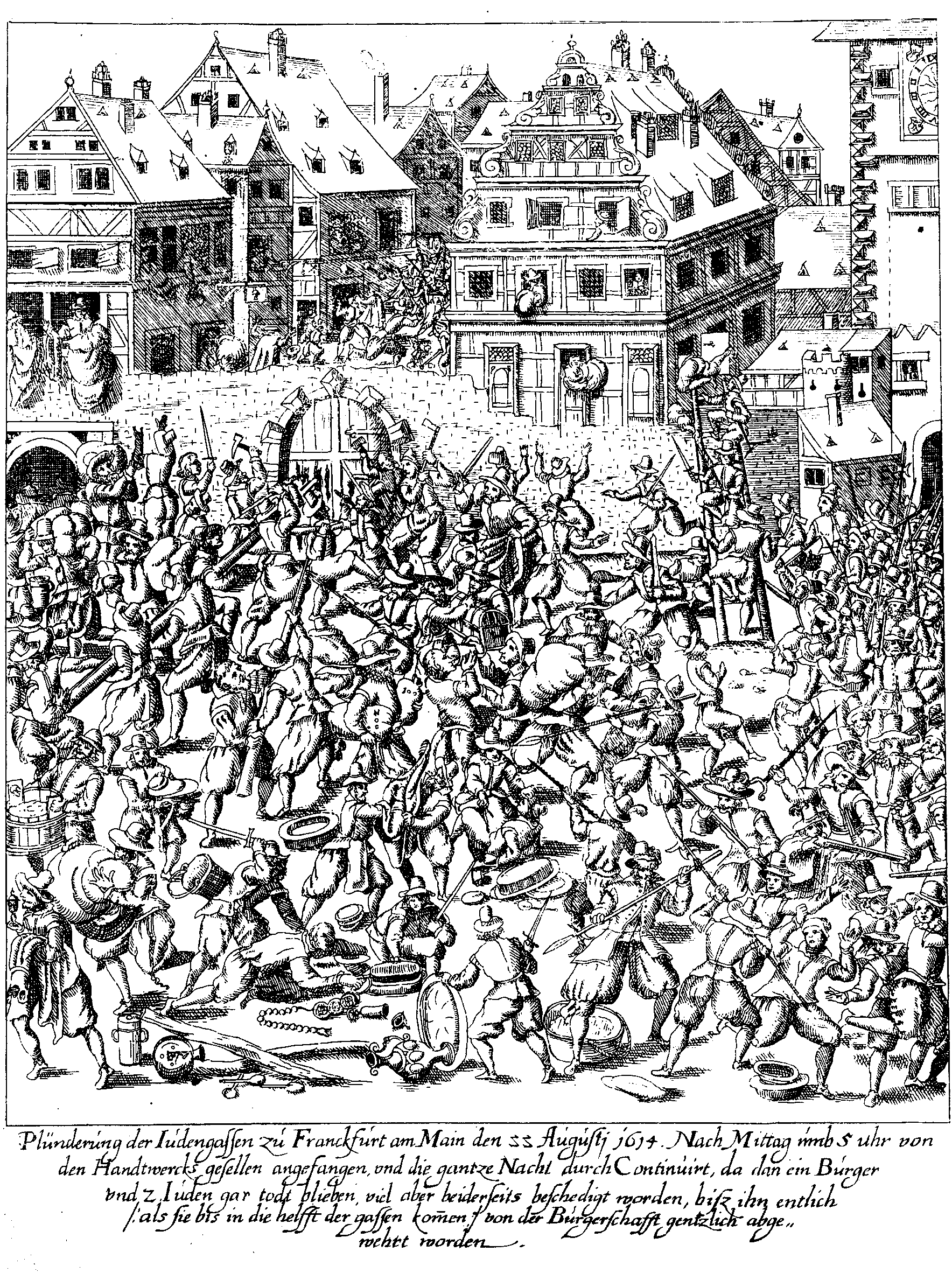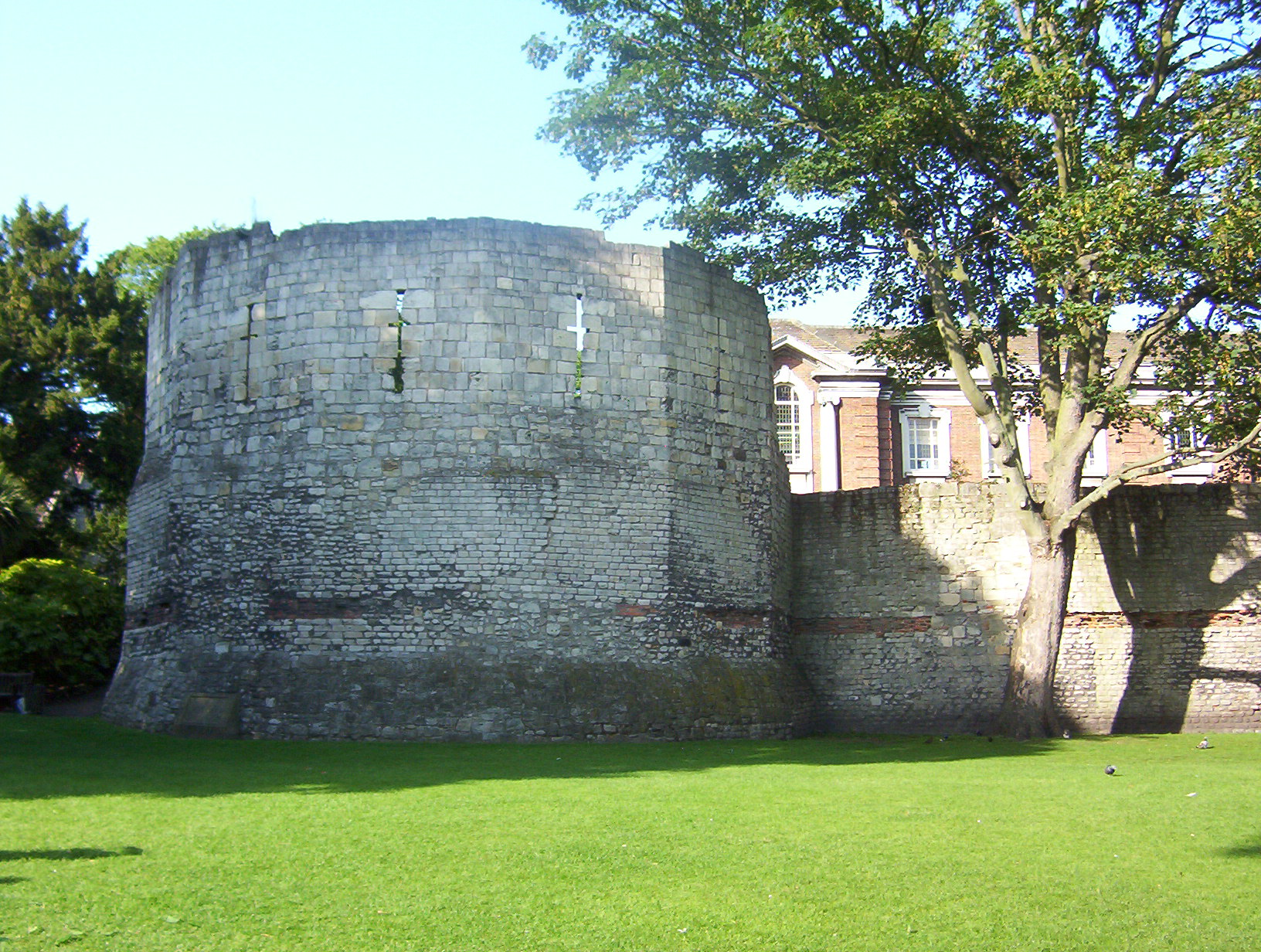|
Newbo Abbey
Newbo Abbey was a Premonstratensian house of canons regular in Lincolnshire, England, dedicated to the Assumption of Mary. In the Middle Ages, Lincolnshire was one of the most densely populated parts of England. Within the historical county there were no less than nine Premonstratensian houses. Other than Newbo Abbey, these were: Barlings Abbey, Cammeringham Priory, Hagnaby Abbey, Newsham Abbey, Orford Priory (women), Stixwould Priory, Tupholme Abbey and West Ravendale Priory. Pogrom Newbo was founded in about 1198 very close to Sedgebrook by Richard de Malebisse or Malbis (died 1209). Malbis, as one of the judges itinerant of York and heavily in debt to a Jewish banker, had instigated in 1190 a pogrom against the Jews of the city, which may have cost as many as 500 lives. (See the History section of York Castle and the page of Yom Tov of Joigny, an eminent rabbi who was among the victims.) Decline ''"In 1401, the monastery was almost depopulated by the results of pestilenc ... [...More Info...] [...Related Items...] OR: [Wikipedia] [Google] [Baidu] |
Premonstratensian
The Order of Canons Regular of Prémontré (), also known as the Premonstratensians, the Norbertines and, in Britain and Ireland, as the White Canons (from the colour of their habit), is a religious order of canons regular of the Catholic Church founded in Prémontré near Laon in 1120 by Norbert of Xanten, who later became Archbishop of Magdeburg. Premonstratensians are designated by ''OPraem'' (''Ordo Praemonstratensis'') following their name. Norbert was a friend of Bernard of Clairvaux and was largely influenced by the Cistercian ideals as to both the manner of life and the government of his order. As the Premonstratensians are not monks but canons regular, their work often involves preaching and the exercising of pastoral ministry; they frequently serve in parishes close to their abbeys or priories. History The order was founded in 1120. Saint Norbert had made various efforts to introduce a strict form of canonical life in various communities of canons in Germany; in 112 ... [...More Info...] [...Related Items...] OR: [Wikipedia] [Google] [Baidu] |
Sedgebrook
Sedgebrook is an English village and civil parish in the South Kesteven district of Lincolnshire. It lies on the A52 road, west of Grantham. Its population, given as 372 in 2001, fell by the 2011 census to 355, and was estimated to be 347 in 2019. Heritage Sedgebrook is mentioned in the 1086 ''Domesday Book'' as Sechebroc in the wapentake of Winnibriggs. The name Robert Malet and three mills are noted. Sechebroc means "Brook where sedge grows", from OE secg "sedge" and brôc "a brook" The parish church of St Lawrence is a largely 15th-century building with an early 13th-century north arcade and a 14th-century chancel arch. A pamphlet history of the church appeared in 1980 and was republished in 1990. The church is the only Grade I listed building in the village. Sedgebrook Manor House is Grade II* listed, and three other houses and three architectural features are Grade II. The church shares a priest with Foston, West Allington and Long Bennington. The Grantham Canal passe ... [...More Info...] [...Related Items...] OR: [Wikipedia] [Google] [Baidu] |
Monasteries In Lincolnshire
A monastery is a building or complex of buildings comprising the domestic quarters and workplaces of monastics, monks or nuns, whether living in communities or alone (hermits). A monastery generally includes a place reserved for prayer which may be a chapel, church, or temple, and may also serve as an oratory, or in the case of communities anything from a single building housing only one senior and two or three junior monks or nuns, to vast complexes and estates housing tens or hundreds. A monastery complex typically comprises a number of buildings which include a church, dormitory, cloister, refectory, library, balneary and infirmary, and outlying granges. Depending on the location, the monastic order and the occupation of its inhabitants, the complex may also include a wide range of buildings that facilitate self-sufficiency and service to the community. These may include a hospice, a school, and a range of agricultural and manufacturing buildings such as a barn, a forge, ... [...More Info...] [...Related Items...] OR: [Wikipedia] [Google] [Baidu] |
Belvoir Castle
Belvoir Castle ( ) is a faux historic castle and stately home in Leicestershire, England, situated west of the town of Grantham and northeast of Melton Mowbray. The Castle was first built immediately after the Norman Conquest of 1066 and has since been rebuilt at least three times, the surviving structure, a grade I listed mock castle, dating from the early 19th century. It is the seat of David Manners, 11th Duke of Rutland (the tiny county of Rutland lies south of Belvoir Castle), whose direct male ancestor inherited it in 1508. The traditional burial place of the Manners family was in the parish church of St Mary the Virgin, Bottesford, situated to the north of the Castle, but since 1825 they have been buried in the ducal mausoleum built next to the Castle in that year, to which their ancient monuments were moved. It remains the private property of the Duke of Rutland but is open to the general public. The castle is situated at the extreme northern corner of the cou ... [...More Info...] [...Related Items...] OR: [Wikipedia] [Google] [Baidu] |
Duke Of Rutland
Duke of Rutland is a title in the Peerage of England, named after Rutland, a county in the East Midlands of England. Earldoms named after Rutland have been created three times; the ninth earl of the third creation was made duke in 1703, in whose family's line the title continues. The heir apparent to the dukedom has the privilege of using the courtesy style/title of the Marquis/Marquess of Granby. Earldom of Rutland First creation The title Earl of Rutland was created on 25 February 1390 for Edward of Norwich (1373–1415), son of Edmund of Langley, 1st Duke of York, and grandson of King Edward III. Upon the Duke's death in 1402 Edward became Duke of York. The title Earl of Rutland fell into disuse upon his death at the Battle of Agincourt, and was assumed by other members of the House of York including the first earl's nephew Richard Plantagenet, 3rd Duke of York, the father of King Edward IV. Second creation The title Earl of Rutland was created on 29 January 1446 for E ... [...More Info...] [...Related Items...] OR: [Wikipedia] [Google] [Baidu] |
Margery Lyster
Margery Lyster or Lister, nee Horsman (died 1565) was an English courtier in the 1520s and 1530s. Career She became a Maid of Honour at court, and is recorded in the service of three queens consort of Henry VIII of England. Her dates of birth and death are uncertain, the burial of a "Margareta Lyster" at St Martin-in-the-Fields was recorded in July 1565. Purkoy Margery was involved in the business of placing 15 year old Anne Bassett, a daughter of Lady Lisle, at court. She is the source of information about Anne Boleyn's dog Purkoy. The name is ''pourquoi'', French for Why? Thomas Broke wrote to Lady Lisle on 18 December 1535 that "Mistress Margery Horsman" had told him how much Anne had delighted in "little Purkoy", presumably one of her many gifts to Anne. Sadly, Purkoy had died from a fall, and for a time, according to Margery, there "durst nobody tell her Grace of it, till it pleaseth the Kings Highness to tell her Grace of it". Broke's letter does not say when or where Purkoy ... [...More Info...] [...Related Items...] OR: [Wikipedia] [Google] [Baidu] |
Henry VIII
Henry VIII (28 June 149128 January 1547) was King of England from 22 April 1509 until his death in 1547. Henry is best known for his six marriages, and for his efforts to have his first marriage (to Catherine of Aragon) annulled. His disagreement with Pope Clement VII about such an annulment led Henry to initiate the English Reformation, separating the Church of England from papal authority. He appointed himself Supreme Head of the Church of England and dissolved convents and monasteries, for which he was excommunicated by the pope. Henry is also known as "the father of the Royal Navy" as he invested heavily in the navy and increased its size from a few to more than 50 ships, and established the Navy Board. Domestically, Henry is known for his radical changes to the English Constitution, ushering in the theory of the divine right of kings in opposition to papal supremacy. He also greatly expanded royal power during his reign. He frequently used charges of treason and ... [...More Info...] [...Related Items...] OR: [Wikipedia] [Google] [Baidu] |
Yom Tov Of Joigny
Yom Tov (alt. Yom Tob) of Joigny, also denoted of York (died 1190) was a French-born rabbi and liturgical poet of the medieval era who lived in York, and died in the massacre of the Jews of York in 1190. A Hebrew language hymn attributed to him, transliterated "Omnam Kayn" or "Omnam Ken" ( Heb: "indeed thus") is still recited in Eastern Ashkenazi synagogues each year on the evening of Yom Kippur, the Day of Atonement. He was a student of Rabbeinu Tam. Pogrom He died at York Castle on 17 March 1190. The incident was provoked by Richard de Malbis (Richard Malebisse), who was in considerable debt to Aaron of Lincoln. When a fire accidentally broke out in the city on 16 March 1190, de Malbis used the opportunity to incite a mob to attack the home of Benedict of York, the recently deceased agent of Aaron of Lincoln, killing his widow and children and burning the house. The following evening, (the day of the Jewish feast of Shabbat HaGadol, the shabbat before Passover), Josce of Y ... [...More Info...] [...Related Items...] OR: [Wikipedia] [Google] [Baidu] |
York Castle
York Castle is a fortified complex in the city of York, England. It consists of a sequence of castles, prisons, law courts and other buildings, which were built over the last nine centuries on the south side of the River Foss. The now-ruined keep of the medieval Norman castle is commonly referred to as Clifford's Tower. Built originally on the orders of William I to dominate the former Viking city of Jórvík, the castle suffered a tumultuous early history before developing into a major fortification with extensive water defences. After a major explosion in 1684 rendered the remaining military defences uninhabitable, York Castle continued to be used as a jail and prison until 1929. The first motte and bailey castle on the site was built in 1068 following the Norman conquest of York. After the destruction of the castle by rebels and a Viking army in 1069, York Castle was rebuilt and reinforced with extensive water defences, including a moat and an artificial lake. York Castl ... [...More Info...] [...Related Items...] OR: [Wikipedia] [Google] [Baidu] |
Pogrom
A pogrom () is a violent riot incited with the aim of massacring or expelling an ethnic or religious group, particularly Jews. The term entered the English language from Russian to describe 19th- and 20th-century attacks on Jews in the Russian Empire (mostly within the Pale of Settlement). Similar attacks against Jews which also occurred at other times and places retrospectively became known as pogroms. Sometimes the word is used to describe publicly sanctioned purgative attacks against non-Jewish groups. The characteristics of a pogrom vary widely, depending on the specific incident, at times leading to, or culminating in, massacres. Significant pogroms in the Russian Empire included the Odessa pogroms, Warsaw pogrom (1881), Kishinev pogrom (1903), Kiev pogrom (1905), and Białystok pogrom (1906). After the collapse of the Russian Empire in 1917, several pogroms occurred amidst the power struggles in Eastern Europe, including the Lwów pogrom (1918) and Kiev Pogroms (191 ... [...More Info...] [...Related Items...] OR: [Wikipedia] [Google] [Baidu] |
York
York is a cathedral city with Roman Britain, Roman origins, sited at the confluence of the rivers River Ouse, Yorkshire, Ouse and River Foss, Foss in North Yorkshire, England. It is the historic county town of Yorkshire. The city has many historic buildings and other structures, such as a York Minster, minster, York Castle, castle, and York city walls, city walls. It is the largest settlement and the administrative centre of the wider City of York district. The city was founded under the name of Eboracum in 71 AD. It then became the capital of the Roman province of Britannia Inferior, and later of the kingdoms of Deira, Northumbria, and Jórvík, Scandinavian York. In the Middle Ages, it became the Province of York, northern England ecclesiastical province's centre, and grew as a wool-trading centre. In the 19th century, it became a major railway network hub and confectionery manufacturing centre. During the Second World War, part of the Baedeker Blitz bombed the city; it ... [...More Info...] [...Related Items...] OR: [Wikipedia] [Google] [Baidu] |






